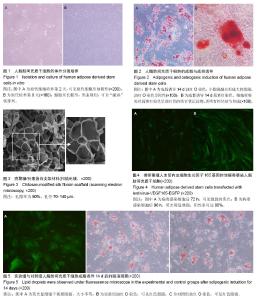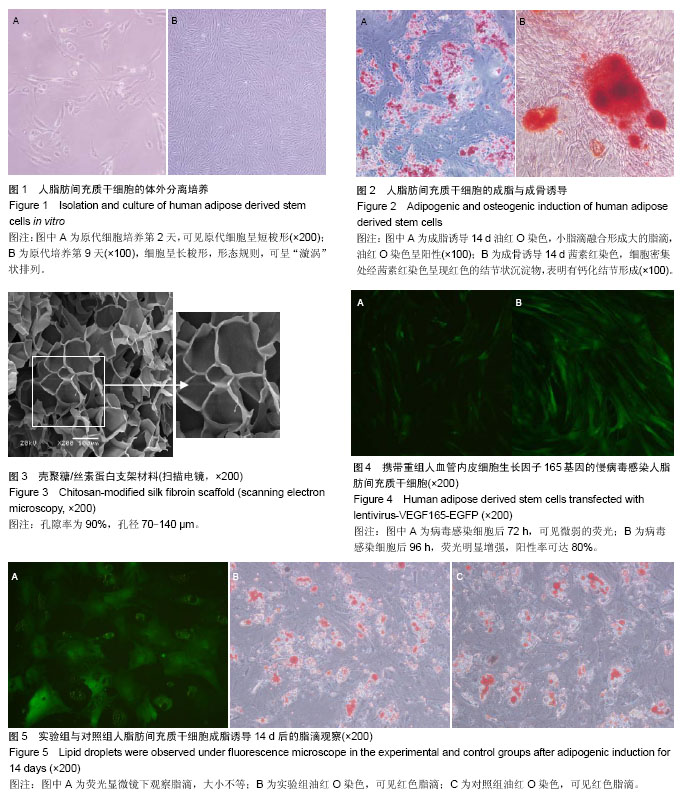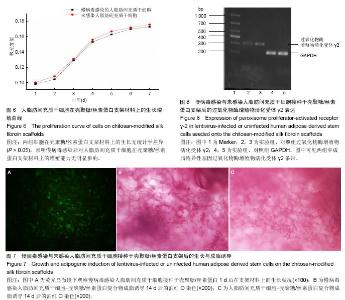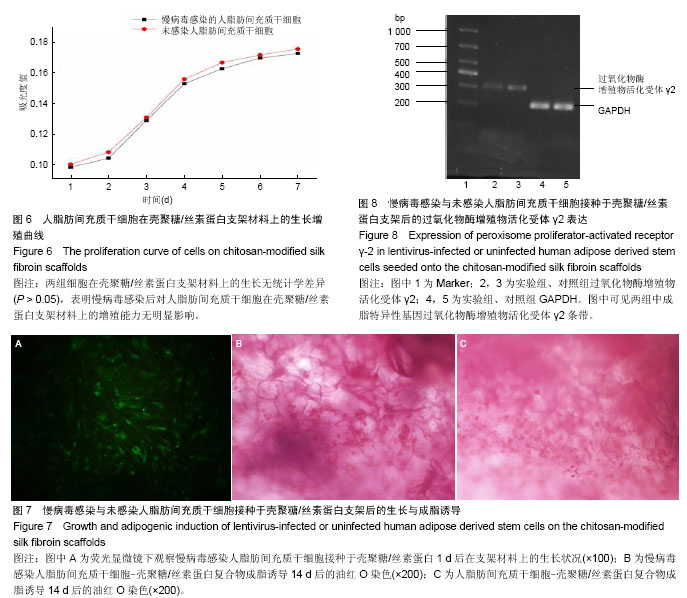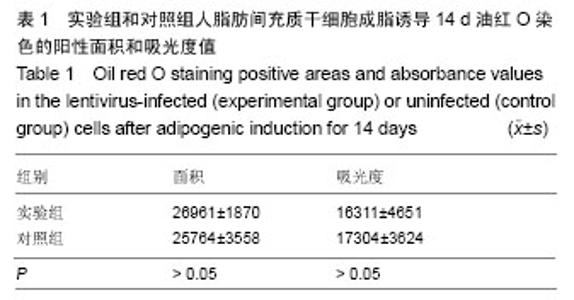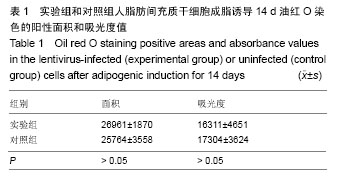| [1] Shiffman MA,Mirrafati S.Fat transfer techniques: the effect of harvest and transfer methods on adipocyte viability and review of the literature. Dermatol Surg. 2001;27(9):819-826.
[2] Kim EH,Heo CY.Current applications of adipose-derived stem cells and their future perspectives.World J Stem Cells.2014; 6(1):65-68.
[3] Lu Q,Huang Y,Li M,et al.Silk fibroin electrogelation mechanisms.Acta Biomaterialia.2011;7(6):2394-2400.
[4] Kim UJ,Park J,Kim HJ,et al.Three-dimensional aqueous-derived biomaterial scaffolds from silk fibroin. Biomaterials.2005;26(15):2775-2785.
[5] Luangbudnark W,Viyoch J,Laupattarakasem W,et al. Properties and biocompatibility of chitosan and silk fibroin blend films for application in skin tissue engineering. Scientific World J.2012;2012:697201.
[6] Mizuno H,Tobita M,Uysal AC.Adipose-Derived Stem Cells as a Novel Tool for Future Regenerative Medicine.Stem Cells. 2012;30(5):804-810.
[7] 朱晓琳,徐丽丽,杨乃龙.尿酸抑制人骨髓间充质干细胞的成脂分化[J].中国组织工程研究,2012,16(36):6669-6673.
[8] 陶忠芬,蔡永国,杨仕明,等.树突状细胞扫描电镜样本制备方法[J].第三军医大学学报,2005,27(12):1299-1300.
[9] 唐军,刘毅,徐斌.胰岛素基因转染的人脐带间充质干细胞与丝素蛋白支架构建组织工程脂肪的研究[J].中华医学美学美容杂志, 2012, 18(4):277-281.
[10] Novosel EC, Kleinhans C, Kluger PJ.Vascularization is the key challenge in tissue engineering.Adv Drug Deliv Rev.2011; 63(4):300-311.
[11] Phelps EA,García AJ.Engineering more than a cell: vascularization strategies in tissue engineering.Curr Opin Biotechnol.2010;21(5):704-709.
[12] 吕军,王培吉.血管内皮生长因子复合人工骨材料修复骨缺损[J].中国组织工程研究与临床康复,2011,15(21):3929-3933.
[13] 林昭伟.BMP2和VEGF165 在诱导大鼠骨髓间充质干细胞成骨再生中的作用[D].南方医科大学,2013.
[14] 徐红珍,苏俭生.组织工程骨的血管化研究进展[J].中华临床医师杂志(电子版),2010,4(4):456-458.
[15] Escors D, Breckpot K.Lentiviral vectors in gene therapy: their current status and future potential.Arch Immunol Ther Exp (Warsz).2010;58(2):107-119.
[16] Sun XZ,Liu GH,Wang ZQ,et al.Over-expression of VEGF165 in the adipose tissue-derived stem cells via the lentiviral vector. Chin Med J (Engl). 2011;124(19): 3093.
[17] Mizuno H,Tobita M,Uysal AC.Concise review: Adipose-derived stem cells as a novel tool for future regenerative medicine.Stem Cells.2012;30(5):804-810.
[18] Itoi Y,Takatori M,Hyakusoku H,et al.Comparison of readily available scaffolds for adipose tissue engineering using adipose-derived stem cells. J Plast Reconstr Aesthet Surg. 2010;63(5):858-864.
[19] Matsuda K,Falkenberg KJ,Woods AA,et al.Adipose-derived stem cells promote angiogenesis and tissue formation for in vivo tissue engineering.Tissue Eng Part A.2013;19(11-12): 1327-1335.
[20] 杨久林,谢红国,于炜婷,等.组织工程用壳聚糖研究进展[J].功能材料,2013,44(11):1521-1525.
[21] Tiyaboonchai W.Chitosan nanoparticles: a promising system for drug delivery. Naresuan University J.2013;11(3):51-66. |
